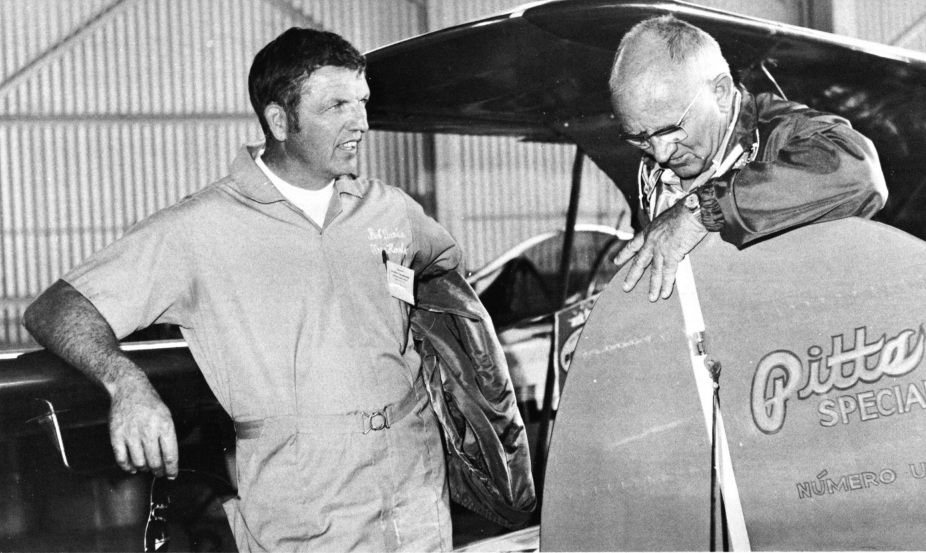Overload plus overweight can equal tragedy
by Bob Davis (IAC 103), Tech Tips Vol 1, January 1973

A Pitts pilot has always taken much comfort and peace of mind from the universal conclusion, "you can't pull a Pitts apart". A few examples of this thinking: "I did a head on snap-roll at 170 mph in an airshow" or "Don't worry about overstressing a Pitts in a pullup. You will blackout before you damage the structure".
Unfortunately, this pleasant feeling of security has been abruptly dispelled. A recent incident and tragic fatal accident have proven beyond any doubt that a Pitts, strong as it is, can be flown to the point where the structure will fail.
The Incident: This aircraft's engine was changed from a 180 hp Lycoming with fixed pitch prop to the 200 hp Lycoming "Aerobatic" with constant speed prop. A large heavy oil tank was installed behind the seat with aero-quip lines to the engine. These modifications along with additional accessories and the 230-pound pilot brought the gross weight to approximately 1250 pounds. The design limits for the Pitts are 6 positive and 3 negative at 1050 pounds. Result: After one season, the fabric was removed from the wings. All of the ribs but three were found broken with some ribs falling to the floor when the fabric was removed. The top left rear spar was cracked on both sides. Lower wing, front spar fitting holes used for the spar to fuselage attachment fitting were severely elongated. G loading range experienced was plus 8 to minus 6. Obviously, this aircraft was flown out of the design envelope and was in the process of disintegrating.
The Accident: This Pitts was flown almost entirely in airshow work. It was subjected to repeated 6-7 turn snap-rolls with entry speeds as high as 170 knots, resulting in loads of 10 to 12gs. The pilot sincerely felt that the Pitts design was more than adequate for these maneuvers.
The morning of the accident the pilot was practicing for an airshow later in the day. An eyewitness stated that after a tailslide, a pull-up to vertical was started and at this point, the upper right wing separated. The right wing "I" strut fell to the ground in front of the observer, then the upper right wing. The aircraft started a roll to the right as the lower right wing folded back along the fuselage, contacting the ground approximately 2500 feet from the initial pull-up.
Examination of the wreckage disclosed separation of the top right wing at the inboard rib adjacent to the center section. All flying wires were intact and still attached to the main body of the wreckage. The flying wires attached to the top right wing had been pulled out of the wing along with a 3-inch section of both front and rear spars. All the available evidence indicates that the failure was caused by repeated high "g" load applications resulting in progressive damage and eventual failure. The first incident described damage to the top, left rear spar. It is interesting to note that the wing failure of this accident occurred at the same spot, i.e., inboard rib next to the center section. This would appear to be an excellent area to check closely on pre-flight.
There are many lessons to be learned from these accounts and every aerobatic pilot should evaluate his flying habits with these examples in mind. One lesson is very obvious: When any aircraft is flown out of its design limits, whatever the reason, overweight, overstressing or combination thereof, can only result in damage with highly probable fatal consequences.

